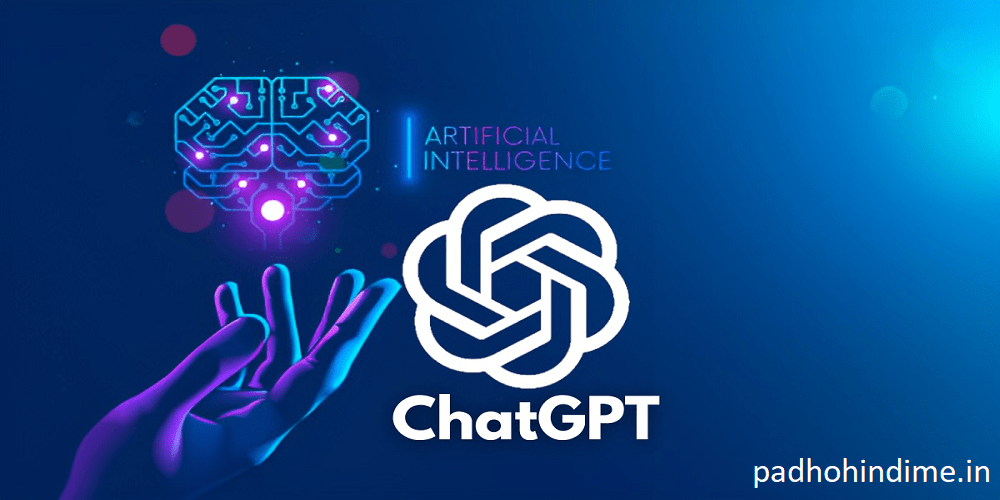What Is Chat Gpt.
ChatGPT is an advanced language model developed by OpenAI. It belongs to the GPT-3.5 architecture, which stands for “Generative Pre-trained Transformer 3.5.” With its ability to process and generate human-like text, ChatGPT has revolutionized the field of natural language processing and conversational AI.
Language models like ChatGPT are designed to understand and generate human language. They are trained on vast amounts of text data from the internet and other sources, allowing them to learn the patterns, structures, and context of language. This pre-training process enables the model to generate coherent and contextually relevant responses to user queries.
At its core, ChatGPT is powered by a deep learning model known as a transformer. Transformers have revolutionized natural language processing by overcoming limitations of previous models and significantly improving the quality of text generation. The transformer architecture consists of multiple layers of self-attention and feed-forward neural networks, allowing the model to capture complex relationships between words and generate high-quality responses.
The training process of ChatGPT involves two main steps: pre-training and fine-tuning. During pre-training, the model learns to predict the next word in a sentence by considering the preceding context. This process helps the model learn grammar, facts, reasoning abilities, and even some world knowledge. GPT-3.5, the architecture behind ChatGPT, is trained on a massive scale, with billions of parameters, resulting in a highly capable language model.
After pre-training, the model goes through fine-tuning, which is more specific and targeted. Fine-tuning involves training the model on a narrower dataset that is carefully generated with human reviewers. These reviewers follow guidelines provided by OpenAI to review and rate possible model outputs for various inputs. The model learns from this feedback to improve its responses and align them with human values and preferences. This iterative feedback loop ensures that the model becomes increasingly reliable and produces high-quality outputs.
ChatGPT can be utilized in a wide range of applications. It can assist users in generating coherent and contextually appropriate text, answer questions, provide explanations, offer creative suggestions, and even engage in meaningful conversations. The model can be integrated into chatbots, virtual assistants, customer support systems, content generation tools, and other conversational interfaces.
Despite its impressive capabilities, ChatGPT has some limitations. It may occasionally generate incorrect or nonsensical responses, be sensitive to input phrasing, or exhibit biases present in the training data. OpenAI continues to work on addressing these limitations and making improvements to ensure that the model provides reliable and useful interactions.
ChatGPT has the potential to revolutionize the way humans interact with technology. It offers a glimpse into a future where AI-powered virtual assistants can understand and respond to human queries naturally and accurately. OpenAI’s ongoing research and development efforts, combined with the collective feedback from users, are crucial for refining and enhancing the capabilities of ChatGPT and paving the way for even more advanced conversational AI systems.
Benefits of Chatgpt.
ChatGPT offers several benefits in various domains and applications. Here are some of the key advantages of using ChatGPT:
- Natural Language Understanding: ChatGPT has the ability to understand and process human language, allowing users to communicate with the model in a natural and conversational manner. This makes it easier for users to interact with AI systems and obtain the information they need.
- Contextual Responses: The model considers the context of the conversation and generates responses that are contextually relevant. It can remember and refer back to previous parts of the conversation, leading to more coherent and meaningful interactions.
- Language Generation: ChatGPT excels in generating high-quality text responses. It can generate explanations, provide detailed answers, offer creative suggestions, and even engage in open-ended conversations. This makes it a valuable tool for content generation, virtual assistants, and customer support systems.
- Accessibility: ChatGPT enhances accessibility by enabling users to interact with technology through natural language. It can help individuals with disabilities or language barriers to access information, services, and support more easily.
- Automation and Efficiency: By automating responses to frequently asked questions and routine tasks, ChatGPT can save time and resources for businesses. It can handle a large volume of inquiries simultaneously, reducing the need for human intervention and increasing operational efficiency.
- Scalability: ChatGPT is a scalable solution that can handle a high number of concurrent users. It can be integrated into various platforms and applications, making it suitable for small-scale deployments as well as large-scale systems with millions of users.
- Personalization: With fine-tuning, ChatGPT can be customized to align with specific user preferences, brand tone, or domain-specific knowledge. This allows for a personalized user experience and better integration into specific applications or industries.
- Continuous Learning: The iterative feedback loop in the fine-tuning process enables ChatGPT to improve and adapt over time. OpenAI can leverage user feedback and additional training data to address limitations, correct biases, and refine the model’s responses, resulting in a continuously evolving and improving system.
- Knowledge Base and Information Retrieval: ChatGPT can be integrated with external databases, APIs, or knowledge bases to retrieve and provide up-to-date information to users. This expands its capabilities beyond pre-existing knowledge and enables it to serve as a powerful information retrieval tool.
- Educational and Research Tool: ChatGPT can be used as an educational resource for learning and exploration. It can provide explanations, clarify concepts, and engage in interactive learning experiences. Researchers can also utilize ChatGPT as a tool to study human-machine interactions and further advance the field of conversational AI.
These benefits make ChatGPT a versatile and valuable tool in various industries, including customer service, e-commerce, content generation, education, healthcare, research, and more. Its ability to understand and generate human-like text opens up new possibilities for human-AI collaboration and interaction.
Benefits Of Chatgpt In Education.
ChatGPT offers several benefits in the field of education. Here are some of the key advantages of using ChatGPT in an educational context:
- Instant Assistance: ChatGPT can provide immediate answers and explanations to students’ questions, offering on-demand support and guidance. It can help students overcome obstacles or misunderstandings they may encounter while studying, thus enhancing their learning experience.
- Personalized Learning: ChatGPT can adapt to individual students’ needs and provide personalized feedback. It can identify knowledge gaps, suggest relevant resources, and offer tailored explanations to help students grasp concepts more effectively. This personalized approach promotes self-paced learning and caters to students’ specific requirements.
- 24/7 Availability: Unlike traditional teaching methods, ChatGPT is available round the clock, allowing students to seek assistance at any time. This accessibility ensures that students can receive support and clarification even outside regular classroom hours, fostering continuous learning and independent exploration.
- Enhanced Engagement: ChatGPT can engage students in interactive conversations, making the learning process more engaging and enjoyable. By promoting active participation and interactivity, it can improve student motivation, attention, and overall interest in the subject matter.
- Supplementary Learning Material: ChatGPT can generate additional learning material, such as examples, practice questions, or summaries, to supplement existing course materials. It can provide students with extra resources to reinforce their understanding and expand their knowledge beyond the classroom.
- Language Practice and Feedback: ChatGPT can assist students in language learning by providing conversational practice, grammar explanations, and vocabulary assistance. Students can practice their language skills in a supportive environment and receive immediate feedback on their usage, helping them improve their language proficiency.
- Exploratory Learning: ChatGPT can facilitate exploratory learning by encouraging students to ask open-ended questions and engage in discussions on various topics. It can spark curiosity, stimulate critical thinking, and promote independent research, enabling students to deepen their understanding and develop their analytical skills.
- Assistance for Special Needs: ChatGPT can cater to the needs of students with disabilities or learning differences by offering personalized support and alternative learning approaches. It can present information in different formats, adapt to individual learning styles, and provide assistance tailored to specific requirements.
- Assessment and Feedback: ChatGPT can assess student understanding through quizzes, practice tests, or interactive assignments. It can provide immediate feedback on students’ performance, highlighting areas of improvement and helping them track their progress.
- Research and Study Aid: ChatGPT can serve as a research tool, assisting students in finding relevant information, summarizing research papers, or generating outlines for essays and reports. It can save time and enhance the efficiency of information retrieval, enabling students to focus more on analysis and critical thinking.
By leveraging the capabilities of ChatGPT, educators can augment their teaching methods, provide individualized support, and create more engaging learning experiences for students. ChatGPT’s accessibility, responsiveness, and adaptability make it a valuable tool for enhancing education and empowering students in their learning journeys.




